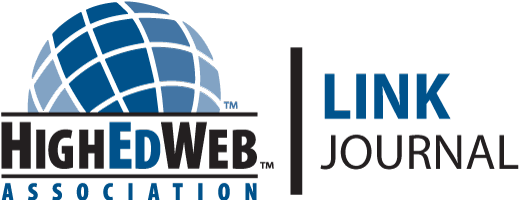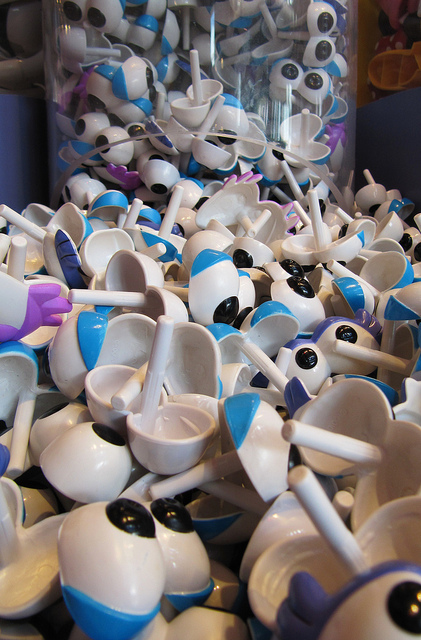It was a full house in Skyline II for Conny Leigl’s session, “Mix it up! The art of remixing content,” so much so that this Link blogger had to take notes by hand – you can’t laptop it up without a lap.
Leigl is a senior designer for web, graphics and user experience for the Robert E. Kennedy Library at California Polytechnic. And if you were looking for a golden nugget from her session, and if you were judging by the content of live tweets, it would have to be the “library project worksheet” – a landscaped layout of empty boxes; fields that needed to be filled in, things like audience, responsibilities, goals, milestones and the like. But, what’s more, is that Leigl’s team requires people to sign off on these project sheets – and also requires the supervisor of the person requesting a project to also sign. This gets the ultimate buy-in and holds all accountable.
That was the main idea behind this talk. Workflow, making this more efficient, removing duplicated efforts, giving clarity to roles and responsibilities. And, to do that, the answer often lies in processes. While creative types might want to create, having workflow systems in place keeps the operation smooth.
Without structure and organization, Leigl says, “You have a bunch of piles of crap and don’t know where to start.”
To illustrate, she took out a bag of plastic potatoes and body parts and accessories. You have to then make some sense of what’s in that pile. Could be a boy and a girl in there, but who knows, she pondered.
She suggests to start sketching, but to do so by yourself so that you don’t get into groupthink. Then you can share it with others. Annotate. Use arrows and labels. See what starts to come together. Leigl says these visuals are a good starting point—then, you iterate to improve.
In the case study example that was the foundation of her presentation—the library website redesign—she and her team also left blank paper in the library and invited students to sketch what they thought and put it in a box. The got simple Google-like ideas to elaborate sketches.
As ideas come together, she went back to Mr. and Mrs. Potatohead, to show what happens.
“Now you have a database; you have four arms here and two wigs there,” she said, alluding to the fact that now you know what you have and how you can use it.
In the end, the library’s website because simpler. While some students did have complicated sketches in their “dream wireframes”, when it comes down to it, Leigl said, “They just want to find their books and see when we’re open.”
Other key takeaways from this session included the mentality of “separating content from form” and, instead, keeping COPE in mind. Or – Create Once, Publish Everywhere.
This can be offline too—and not just in print publications. The Kennedy Library also was going through a physical redesign, and the way-finding signs, the color scheme, everything can all tie back to the web experience. While talking about architecture and floor plans might seem like a stretch, for some, in a web content presentation, adding this element to her talk reminds us how branding touches everything. The user experience is not just in the computers; it can also be in the buildings.
Nearing the end of her session, Leigl reminded attendees that changes don’t happen overnight. It takes time. But in the meantime, there might be quick fixes you can do. She challenged people in the audience to look for flaws and create hacks. “Think of those things that you always say, ‘I will do that next time,’” she said, using adding the right keywords or alt tag to an image or page. Just start doing it.
She ended with this ever familiar problem of: “With exceptional work comes high demand.”
Working smarter and more efficient, using some tools and ideas she mentioned, can help get more done. She urges people to remix things up. To steal some ideas, but don’t make it look like their stolen.
Something not in her presentation, but a thought that came about from an audience question, was the notion of getting students involved with those sketches she had mentioned. An audience member asked how she had luck getting responses. Her reply reminds us all to report back to students about the input they use. Leigl said they built rapport with students because they do see the library takes the ideas seriously.
“They see that we listen, and they genuinely care,” she said, adding that she and others will talk about all of our student-influenced projects on their blog.

